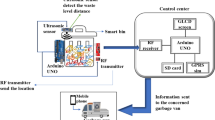Abstract
Ad hoc networks have been proposed for emergency communication wherein the required infrastructure is unavailable. However, a major concern in Ad hoc networks is collisions. Even in infrastructure based wireless networks, when the number of contending nodes is high, more number of frame collisions occur which leads to drastic reduction in network performance. In all IEEE 802.11 based wireless and Ad hoc networks, the backoff algorithm dynamically controls the contention window of the nodes experiencing collisions. Even though several algorithms such as Binary Exponential Backoff, Double Increment Double Decrement backoff, Exponential Increase Exponential Decrease backoff, Hybrid Backoff, Binary Negative Exponential Backoff etc. have been proposed in the literature to enhance the performance of IEEE 802.11 Distributed Coordination Function (DCF) protocol, most of them have not been developed for real- traffic scenarios. Also the packet collision rate is high using these algorithms. So, in this paper, a new Contention Window based Multiplicative Increase Decrease Backoff (CWMIDB) algorithm is proposed for the DCF protocol to alleviate the number of collisions. Furthermore, the packet transmission procedure of the DCF protocol is modified to avoid channel capture effect and this is represented with a Markov chain model. A simple mathematical model is developed for transmission probability considering the non-saturated traffic and channel errors. Results show that the proposed CWMIDB algorithm provides superior quality-of-service parameters over existing backoff algorithms.








Similar content being viewed by others
References
Part 11: Wireless LAN Medium Access Control (MAC) and Physical Layer (PHY) Specifications. (1999). ANSI/IEEE Std. 802.11.
Bianchi, G. (1998). IEEE 802.11 saturation throughput analysis. IEEE Communications Letters, 2(12), 318–320.
Bianchi, G. (2000). Performance analysis of the IEEE 802.11 distributed coordination function. IEEE Journal on Selected Areas in Communications, 18(3), 535–547.
Ziouva, E., & Antonakopoulos, T. (2002). CSMA/CA performance under high traffic conditions: Throughput and delay analysis. Computer Communications, 25(3), 313–321.
Daneshgaran, F., Laddomada, M., Mesiti, F., & Mondin, M. (2008). Unsaturated throughput analysis of IEEE 802.11 in presence of non ideal transmission channel and capture effects. IEEE Transactions on Wireless Communications, 7(4), 1276–1286.
Hung, F.-Y., & Marsic, I. (2007). Analysis of non-saturation and saturation performance of IEEE 802.11 DCF in the presence of hidden stations. In Proceedings of 66th IEEE conference on vehicular technology, pp. 230–234.
Malone, D., Duffy, K., & Leith, D. J. (2007). Modeling the 802.11 distributed coordination function in non-saturated heterogeneous conditions. IEEE/ACM Transactions on Networking, 15(1), 159–172.
Sasi Bhushana Rao, G., & Madhavi, T. (2013). Performance analysis of collision alleviating distributed coordination function protocol in congested wireless networks - a Markov chain analysis. IET Networks, 2(4), 204–213. doi:10.1049/iet-net.2012.0187.
Singal, T. L. (2010). Wireless communications. Tata McGraw Hill.
Al-Jubari, A. M., Othman, M., Ali, B. M., & Hamid, N. A. W. A. (2011). TCP performance in multi-hop wireless ad hoc networks: Challenges and solution. EURASIP Journal on Wireless Communications and Networking, 1, 1–25.
Natkaniec, M., & Pach, A. (2000). An analysis of modified backoff mechanism in IEEE 802.11 networks. In Proceedings of the Polish-German teletraffic symposium (PGTS 2000), pp. 89–96.
Wu, H., Lin, Y., Cheng, S., Peng, Y., & Long, K. (2003). IEEE 802.11 distributed coordination function: Enhancement and analysis. Journal of Computer Science & Technology, 18(5), 607–614.
Xiangyu, P., Letian, J., & Guozhi, X. (2007). Performance analysis of hybrid backoff algorithm of wireless LAN. In Proceedings of 5th international conference on WiCom, pp. 1853–1856.
Choi, B. G., Bae, S. J., Lee, T. J., & Chung, M. Y. (2009). Performance analysis of binary negative-exponential backoff algorithm in IEEE 802.11a WLAN under erroneous channel condition. In Proceedings of ICCSA, pp. 237–249.
Sartthong, J., & Sittichivapak, S. (2012). Backoff algorithm optimization for IEEE802.11 wireless loocal area networks. In Proceedings of ECTI-CON, pp. 1–4.
Jang, K. W. (2004). A new backoff algorithm to guarantee quality of service over IEEE 802.11 wireless local area networks. In Proceedings of WONS, pp. 371–376.
Fan, J., Gao, F., Wang, W. S., & Dong, G. F. (2008). Performance analysis of an adaptive backoff scheme for ad hoc networks. In Proceedings of IEEE international conference on CIT, pp. 624–629.
Albalt, M., & Nasir, Q. (2009). Adaptive backoff algorithm for IEEE 802.11 MAC protocol. International Journal of Communications, Network and System Sciences, 2(4), 300–317.
Zhalehpoor, S., & Shahriar Shahhoseini, H. (2009). SBA backoff algorithm to enhance the quality of service in MANETs. In Proceedings of international conference on signal acquisition and processing (ICSAP 2009), pp. 43–47.
Chatzimisios, P., Boucouvalas, A., & Vitsas, V. (2004). Performance analysis of IEEE 802.11 DCF in presence of transmission errors. In Proceedings of IEEE international conference on communications (7), pp. 3854–3858.
Babich, F., & Comisso, M. (2009). Throughput and delay analysis of 802.11-based wireless networks using smart and directional antennas. IEEE Transactions on Communications, 57(5), 1413–1423.
Mahasukhon, P., Hempel, M., Sharif, H., Zhou, T., Ci, S., & Chen, H.-H. (2007). BER analysis of 802.11b networks under mobility. In Proceedings of IEEE international conference on communications (ICC ’07), pp. 4722–4727.
Author information
Authors and Affiliations
Corresponding author
Rights and permissions
About this article
Cite this article
Madhavi, T., Sasi Bhushana Rao, G. Development of Collision Alleviating DCF Protocol with Efficient Backoff Algorithm for Wireless Ad hoc Networks. Wireless Pers Commun 80, 1791–1814 (2015). https://doi.org/10.1007/s11277-014-2113-4
Published:
Issue Date:
DOI: https://doi.org/10.1007/s11277-014-2113-4




